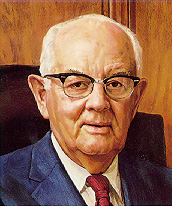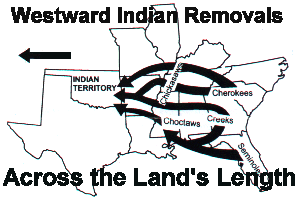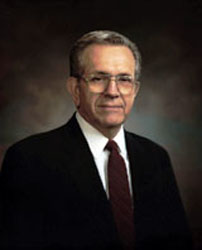
~ Spencer W. Kimball ~
Where Is Cumorah?
by Don R. Hender
Understandably, when the Church's formal policy is that it officially supports no precise mapping of the Book of Mormon Geography, most General Authorities refrain from making pointed statements, which could be used to form such a map. This position of 'quasi' silence is often taken advantage of by those who would subscribe positions on the Book of Mormon map which have not traditionally and historically been supported. Such is the case with the location of the Book of Mormon Hill Cumorah. Enough has been stated which should satisfy most all in the Church that the Hill Cumorah is the Hill Cumorah. It is almost as if one is trying to make a difference as to what the definition of 'is' is.
Many early church members knew and understood where Cumorah was. Cumorah was always Cumorah. And there was no point of argument. It just was. Thus there are not many argumentative type statements attempting to state other wise in the first hundred years of the church. Today some would have church members believe that the relative 'silence' on the matter means that there is a legitimate question as to the location of Cumorah today. Some even have gone as far to state that the majority of Book of Mormon students today support such a theory that places Cumorah in Centeral Amercia. So while there is no official maps sanctioned by the Chruch, a number of those that do take the opportunity to speak out are speaking out against what has been the known and understood from the very beginnings of the Chruch. Cumorah is Cumorah.
Most sermons of the Brethren today take precaution not to include statements which can be used to map the Book of Mormon lands and they feel no need to provide such. Yet very often there are such conclusive statements that are found. One such statement comes from Spencer W. Kimball. While President Kimball does not take to the offensive in his statement, it is clear from what he says that he believed Cumorah was Cumorah. From his statement we can learn that he too believed and supported the concept of the last battles of the Nephites occurring from the southern border of the United States and ending up in the northern reaches of the US in the implied location of Cumorah. I will present the quote, and you can judge for yourself if Spencer W. Kimball supported the concept or not.
The Lamanite and the Gospel
(Spencer W. Kimball)
(BYU Campus, Education Week General Assembly Address, June 13, 1969 - Published and quoted in full in the Student Manual of the Book of Mormon, Volume Two, Published for the use of college students in the Church Education System during the time when Neal A. Maxwell was the Commissoner, pages 293-299)
(Quoted portion under the subtitle The "Battle of America" is on page 293.)

The "Battle of America"
"They [American Indians] were pushed and driven and evicted and exiled from
the time of Columbus for more than 400 years. They fought the "Battle of
America," a continuing battle with some conquests and temporary wins but
with infinitely more loses, each one resulting in a further move westward,
reminiscent of the continuing flight northward by their Nephite victims a
thousand years earlier. Their [Nephite] flight from the south was northward
across the width of this great country [the United States],
and now in the
eighteenth and nineteenth centuries, the retreat was across the length of the
land."

The historical Indian Removals, including the 'Trail of Tears,' were from
the east coast of the United States westard as President Kimball points out
as being across the 'length' of the United States. And the Nephite continual
retreat, which lasted 10 years from 375 to 385 AD, would have been from
Central America and Mexico to New York, a south to northward movement across
the width of the United States, 'this great country,' as President Kimbell
further states. And of course from east to west is longer being the
length of the United States, and from south to north is shorter being the
width. So where would Cumorah be according to President Kimball but where
Cumorah has always been, in New York State.
 At the end of the address, President Spencer W. Kimball retells an
incident that Brother Boyd K. Packer had in Cusco, Peru in the lofty Andes
Mountains. He refers to a 'little Lamanite ragamuffin' that found solace in
the lap of Elder Packer. A very touching story and the whole of President
Kimball's address is well worth the time to read and contemplate the whole of
it as it is reflective of the promises to the descendants of Lehi here in all
the Americas. But my last point is this, if the Lamanite ragamuffin, a
descendant of the Inca, and the Inca being of descendant of the Ancients of
Peru, then how is it that the limited geography model of the Book of Mormon
fails to include all the Ancients of America under their very limited
geographical umbrella? Click Elder Packer's picture for an insightful
discussion.
At the end of the address, President Spencer W. Kimball retells an
incident that Brother Boyd K. Packer had in Cusco, Peru in the lofty Andes
Mountains. He refers to a 'little Lamanite ragamuffin' that found solace in
the lap of Elder Packer. A very touching story and the whole of President
Kimball's address is well worth the time to read and contemplate the whole of
it as it is reflective of the promises to the descendants of Lehi here in all
the Americas. But my last point is this, if the Lamanite ragamuffin, a
descendant of the Inca, and the Inca being of descendant of the Ancients of
Peru, then how is it that the limited geography model of the Book of Mormon
fails to include all the Ancients of America under their very limited
geographical umbrella? Click Elder Packer's picture for an insightful
discussion.
Rev. 9-18-01
Hit Counter:
Return to Book of Mormon Geography Home Page
Return to Cumorah is Cumorah Home Page



